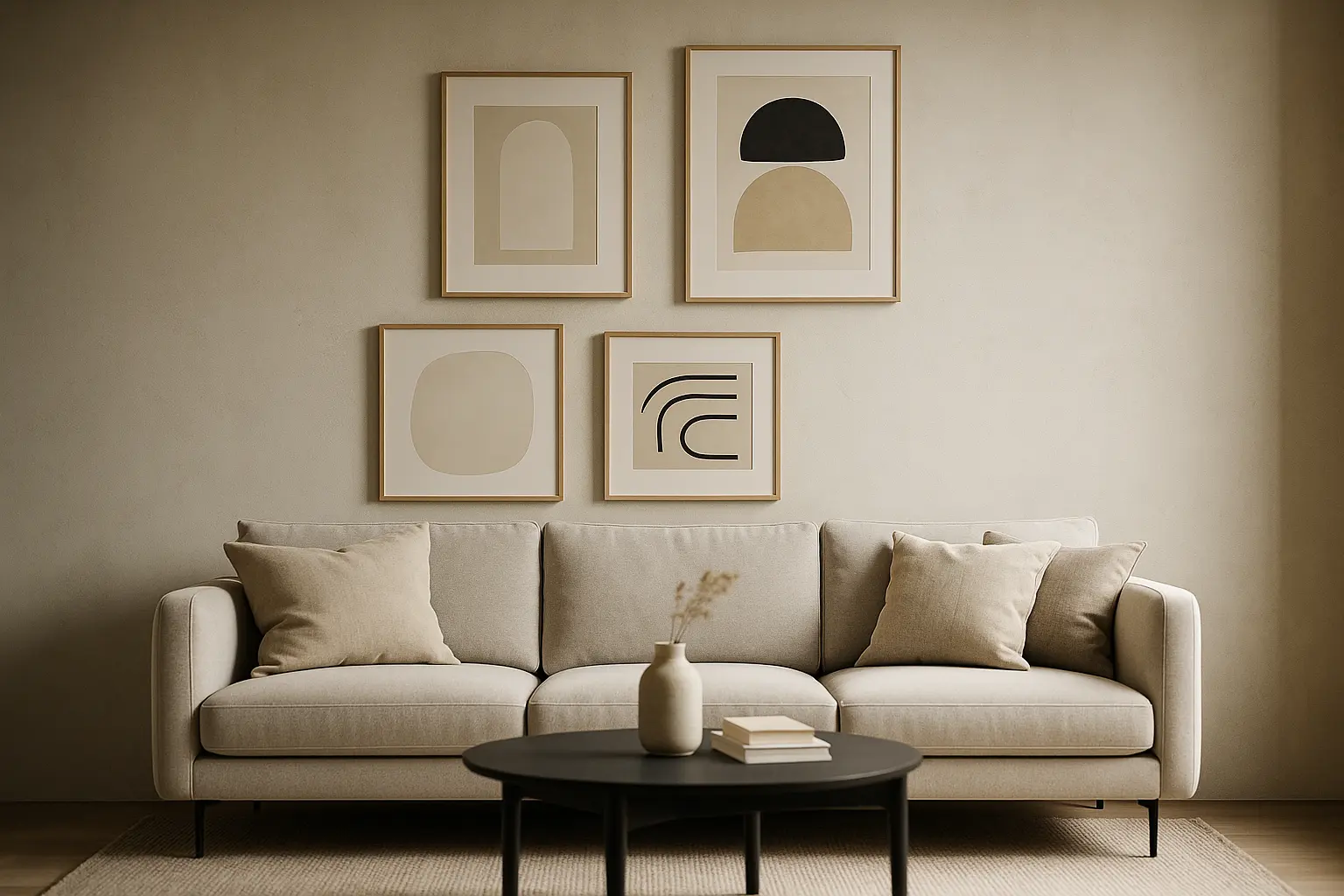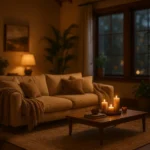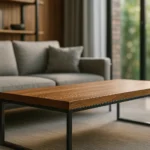In the heart of every room lies a wall that beckons for attention, a blank canvas yearning for an expression as unique as the individuals who dwell within. It’s often overlooked, relegated to a mere backdrop, yet holds boundless potential to transform a space into a vibrant living masterpiece. I find that large walls can be both intimidating and exhilarating, presenting opportunities for creativity to flourish.
Imagine walking into a room where every glance reveals a story, where the art on the walls speaks to your soul and complements the essence of the furniture and decor. Styling large walls without overdoing it is an art form, one that balances design and restraint, style and functionality. Let us embark on this journey to explore the myriad ideas that can bring joy, elegance, and character to your home.
Defining Your Vision: The Foundation of Wall Design
Every great endeavor begins with a vision, and styling a large wall is no exception. The initial step is to determine the role you wish your wall to play in the overall design of the room. Is it meant to be a statement piece or a subtle backdrop that complements your existing decor?
When I approach a space, I like to envision the wall as an extension of the room’s personality. Think about the mood you want to evoke—whether it’s modern, cozy, minimalist, or bold. Consider the furniture and existing decor; is there a theme or color palette you wish to maintain? White walls offer a blank slate that can be transformed with vibrant art or kept serene with monochrome photos.
Once your vision is clear, consider incorporating large pieces of art or furniture that can stand alone or work in tandem. A well-placed big painting or a set of photo frames can fill the space without overwhelming it. Remember, the key is balance. Too much art can clutter, while too little can leave the wall feeling empty.
Gallery Style: Creating a Visual Symphony
A gallery wall offers a dynamic way to display a collection of art, photographs, and mementos, turning your room into a living scrapbook. The beauty of a gallery wall is the opportunity it presents for personal expression, allowing you to narrate your story through visuals.
When curating a gallery wall, I suggest starting with a theme. This could revolve around travel, family, or a specific artistic style. Using various sizes and shapes of frames adds visual interest, but maintaining some uniformity—whether through frame color or matting—helps create cohesion. I find that a mix of photos, printed art, and small sculptures can turn even the most blank wall into a vibrant tableau.
Consider positioning artwork at eye level for maximum impact and using a level to ensure alignment. If you’re feeling adventurous, play with asymmetry, adding pieces gradually over time. Remember, a gallery wall should be an evolving space—a place where new memories can find their home alongside beloved classics.
Embracing Texture: The Subtle Art of Dimension
As much as I love art, texture adds an essential layer to design that color alone cannot achieve. Incorporating different textures on a large wall can create depth, intrigue, and a tactile experience.
One way to introduce texture is through the use of textiles. A woven tapestry or a fabric panel can add warmth and a sense of coziness to a room. If textiles aren’t your preference, consider adding wooden elements, such as reclaimed wood panels or a big rustic headboard, to bring a touch of nature indoors.
Three-dimensional art or sculptural pieces can also enhance a wall’s character. Perhaps a metal sculpture or a series of ceramic plates can serve as focal points. The interplay between smooth and rough, matte and shiny, can add a layer of sophistication that’s both subtle and striking.
Lastly, consider the strategic use of lighting. Adjustable spotlights or wall-mounted fixtures can highlight textured elements, casting interesting shadows that change with the time of day. A warm glow can create an inviting atmosphere, transforming an ordinary space into an extraordinary sanctuary.
Color: The Language of Emotion
Color is a powerful tool in the arsenal of design, capable of influencing mood and perception with a single glance. When it comes to large walls, color can either envelop you in tranquility or invigorate you with energy.
I find it crucial to consider the room’s natural light when choosing colors. Soft pastels can make a space feel open and airy, while deep, rich tones can create an intimate and cozy environment. For those who love a modern touch, monochromatic schemes with varying shades of the same hue offer a clean and sophisticated aesthetic.
Consider using a statement color on an accent wall, allowing it to stand as a backdrop for your furniture and decor. A bold shade can act as a frame for your art, bringing focus and balance. If subtlety is your preference, a simple wash of pale color or a textured paint finish can add a hint of sophistication.
It’s essential to remember that color doesn’t always have to be paint. A large-scale art piece or a colorful tapestry can introduce hues that complement your room’s palette, providing harmony and contrast in equal measure.
Styling large walls is an endeavor that requires thought, creativity, and a dash of daring. It’s about finding that sweet spot where art, design, and personal expression coalesce, breathing life into what was once a blank canvas. I’ve learned that whether it’s through the use of textured elements, the creation of a gallery wall, or the careful selection of color, the goal remains the same: to craft a space that resonates with those who inhabit it.
As you embark on your design journey, remember that your wall is a canvas—one that doesn’t need to be filled all at once. Allow it to evolve, adding pieces that speak to you over time. Love the process, embrace the experimentation, and you’ll find that your room transforms into a sanctuary of style and substance, reflecting the unique tapestry of your life.
FAQ
How can I decorate a large wall without overcrowding it?
Opt for a minimalist approach by selecting a few standout pieces, such as a large painting or a series of smaller artworks that complement each other. Avoid cramming multiple items, which can make the space look cluttered.
What types of artwork are best for large wall spaces?
Consider using oversized canvases or a cohesive gallery wall. Large-scale abstract pieces or panoramic photography can serve as striking focal points and enhance the room’s aesthetic.
Are there any alternatives to traditional artwork for styling big walls?
Yes, you can explore options like tapestries, wall murals, or decorative mirrors. These can add texture and dimension without overwhelming the space with too many small elements.
How can I use color to enhance a large wall without it becoming too bold?
Use a neutral or pastel color palette for the wall itself and choose art pieces or decor elements with accent colors. This allows for a balanced look while still adding visual interest.
Can shelving be used effectively on a large wall?
Absolutely. Installing floating shelves can provide both functionality and style. Use them to display select books, plants, or sculptures, ensuring there’s ample space between items to maintain a clean and organized appearance.



